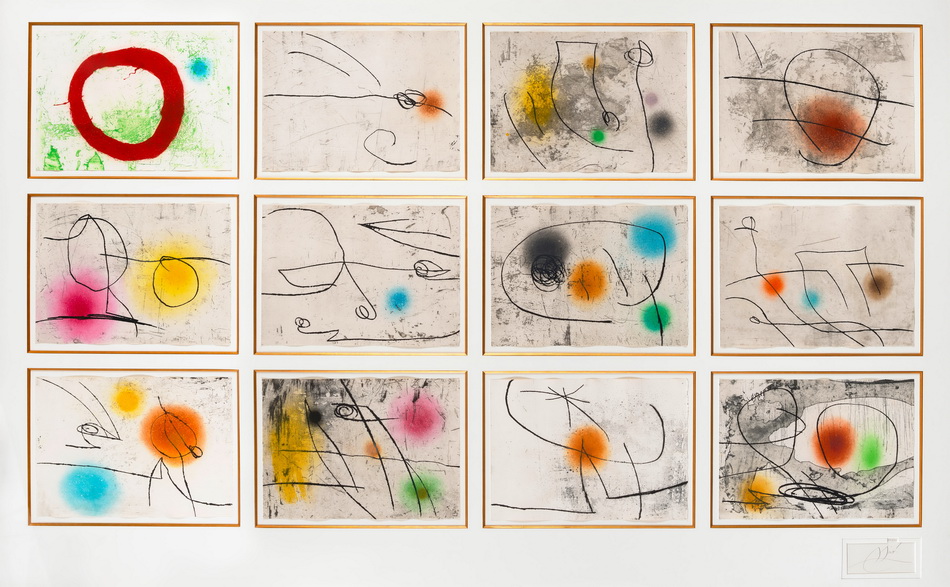图片文件尺寸 : 4904 x 5546px
Joan Miró:Lapidari - Book of the Property of Stones (12 works) (Dupin 1142, 1144, 1146, 1148, 1150, 1152, 1154, 1156, 1158, 1160, 1162, 1164), 1981
A group of 12 etchings and aquatints in colors on Arches paper (lacking the 11 etchings and aquatints in black and white), a section of the frontispiece signed in pencil and numbered 25/130, published/printed by Galeria Maeght/Joan Barbarà, Barcelona, the full sheets, framed together. (12 works)
each sheet 15 1/2 x 21 1/8in (39.3 x 55.5cm)
overall 65 1/2 x 101 1/2in (166.5 x 285.2cm)
胡安·米罗 拉皮达里-石头财产书


![Poesis Philosophica. [Geneva]: Henri Estienne, 1573.](http://www.minghuafuzhi.com/2022/12/02143835812.jpg)
![Arcana Naturae Detecta [bound with]: Continuatio Arcanorum Naturae Detectorum. Delft: Henricum a Krooneveld, 1695 [and] 1697.](http://www.minghuafuzhi.com/2022/12/02144022401.jpg)


